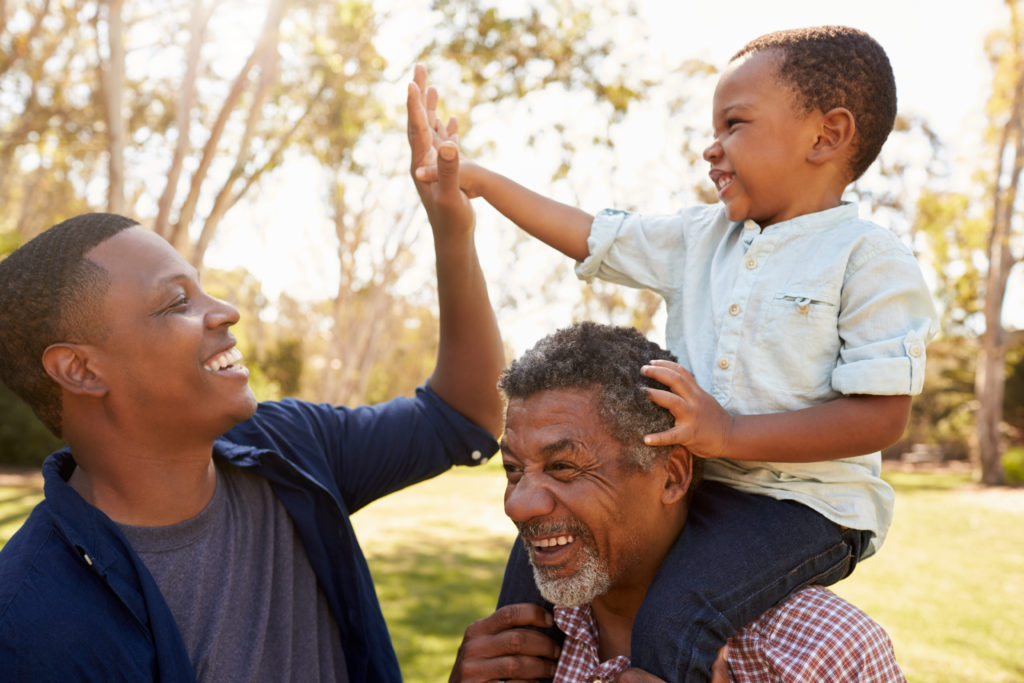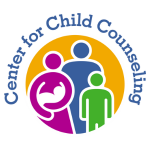 Research shows that just one positive adult can dramatically improve the outlook for a child suffering from Adverse Childhood Experiences (ACEs). Learn how your simple actions can provide a buffer against toxic stress and change the course of a child's life.
Research shows that just one positive adult can dramatically improve the outlook for a child suffering from Adverse Childhood Experiences (ACEs). Learn how your simple actions can provide a buffer against toxic stress and change the course of a child's life.
Remember when you were a child. Think back. Remind yourself how vulnerable you were. The world was big; you were little. Was there ever a time when someone protected you? For many of us, it was an older sibling, maybe a big brother, who stepped in, literally, and came between us and a bully or danger. Do you remember how safe that made you feel? How exhilarating it was, in your moment of need, to know that you could rely on help to arrive. When you hurt yourself or had your feelings hurt, you probably ran to a parent who gave you a caring hug and soothed you. Without consciously knowing it, those of us with these sorts of memories were running to a buffer, looking for the concern and protection every single child needs and deserves…but which not every child gets.
For millions of children worldwide, Adverse Childhood Experiences (ACEs) make growing up a challenge at best and a chaotic nightmare at worst. The brain of a child growing up in a home with attentive parents will create a world view where adults as safe, predictable, and a source of love and sustenance. But the brain of a child living in a home plagued by domestic violence or neglect will create a world view where adults are unreliable and a source of fear and pain. Children carry these ideas with them and they color all future relationships. Depending on their experiences and outlook, children can grow to become nurturing, invested adults or mistrustful, suspicious and withholding.
During this blog series, we’ve learned about ACEs, their tragic lifelong consequences for individuals and communities, and how we must urgently address this greatest of all public health crises. Rather than being overwhelmed by the statistics though, let’s focus on hope because healing is possible.
As a society, we now know more about ACEs than ever before. That knowledge empowers us. On a system level in Palm Beach County, we’ve mobilized the community to fight ACEs, but the truly encouraging news is that you don’t need to be an expert to help turn a child’s life around. Of course, severely traumatized children might need the professional help and compassion provided by skilled therapists like those at the Center for Child Counseling, but for many of the others the answer is relatively straight-forward. The answer is you.
As someone who loves and cares for a child, or who interacts with children often, it is vital to be ACEs educated and trauma informed. Simply by reading this educational blog series, you’ve demonstrated an interest in the subject. You’re already equipped to play your small but vital part in the fight.
Adjust Your Approach
Being trauma-informed really means adjusting our thinking and the way we respond and react to a child’s behavior. Instead of asking: “What’s wrong with you?” the focus should be: “What happened to you?” This changes our attitude to consider what the child has experienced rather than the resulting behaviors which may be frustrating. Follow-up questions will help get to the cause of the problem, questions like: “When did this happen?”, “How long has it been going on?” and “Who has been there to help you since this happened?” This way of approaching children helps to avoid re-traumatizing already traumatized people. It creates a safe, non-judgmental place where children feel secure enough to share their experiences and ask for help without fear of punishment or retribution.
Be a Buffer
Supportive, loving caregivers can buffer the effects of toxic environmental stress. There are many ways you can support a child with ACEs. Studies show that a positive, nurturing relationship with even one engaged adult can help a child cope with adversity. Consider how you interact with children—your own and other people’s—and focus on being loving, kind, and genuinely interested in them.
Easy Ways to be a Buffer
In the bestselling novel “The Help” by Kathryn Stockett, a devoted nanny repeatedly tells the young child in her care: “You are kind. You are smart. You are important.” Let that be your mantra when helping a child who has experienced ACEs. Whether you’re a teacher, neighbor, coach, community volunteer, or friend of the family, being a buffer means employing several different approaches aimed at:
• Reducing stress
• Building positive relationship
• Strengthening life skills
Here are some practical, real-world ways you can combat the toxic stress caused by ACEs.
Celebrate:
When we celebrate a child’s achievements and challenges, both big and small, and affirm who they are as individuals, we support the development of their self-identity and remind them of their competence, importance, and lovability. When we acknowledge their birthdays, graduations, or everyday accomplishments like completing their homework, making a new friend, or doing chores, we help children build positive self-esteem. It may be something as simple as a clap, a smile, or a ‘thumbs up’. These simple gestures are expressions of support that can build self-confidence and help a child to thrive.
Comfort = Safety:
Children who have experienced trauma or toxic stress need comfort. Often, they need help to manage their emotions and to calm themselves down. Practicing relaxation, patience, and emotional regulation may help them connect with their feelings. Creating a safe environment is one of the most valuable components in re-establishing a sense of security and stability for a child. Whether the issue seems big or small, offer reassurance and always reinforce your commitment to be there for them. Sometimes it can be difficult to stay calm and supportive when a child exhibits the behaviors associated with toxic stress, but a measured response tells them that you are solid and reliable.
Help Children Collaborate:
Science shows that children who have been exposed to toxic stress may struggle to appreciate others’ perspectives. They may lack a sense of belonging. They may not have the skills or the know-how to reach out. And they may need help controlling their emotions, working through their problems, and gaining independence. Every day there are opportunities to collaborate or work with children towards common goals. With simple examples, you can teach problem solving and basic negotiating techniques to deal with conflict. When children learn to collaborate fairly, they feel like part of a team rather than isolated.
Grow Optimism:
We’ve already learned that a young child’s growing brain has plasticity – it’s still forming neural pathways and those pathways can be altered for the better. Brain science shows that we can actually train our brains to be more optimistic and hopeful about the future by practicing positive self-talk. You can reinforce this kind of positive brain growth in the children you know.
Don’t Just Hear…Listen:
It may sound easy, but listening is a skill we all need to practice. For all children, especially those who have experienced traumatic stress and violence, a patient and receptive adult who listens can help them feel safe and valued. Active listening means paying careful attention to what is being said, rather than simply hearing it. Listening is the foundation of learning and understanding what a child is trying to communicate. It shows care and concern. Listening to a child and teaching them how to listen helps them communicate and see situations from other people’s perspective – a key to empathy. Whether children are sharing happiness, sadness, anger, or fear, having someone truly listen to them matters.
Hold on to Healthy Relationships:
Often, when parents separate or divorce, it becomes a challenge to help kids maintain healthy contact with grandparents, supportive adults, and extended family members. One key to reducing stress is making the effort to maintain contact with these positive influences. It’s never a bad idea to let your children interact with people who truly love them…sometimes it means setting aside personal feelings in the best interest of the child.
Inspire:
To inspire someone means to lift them up with your words. Children need constant encouragement to recognize and reach their full potential. They need help identifying dreams and working towards them. Children who have witnessed violence and experienced traumatic stress can become negative, often have a low sense of self-worth, expect to be unsuccessful, and fail to foresee a positive future. But caring adults can help children reverse these negative responses. You can help inspire a child by identifying their strengths and natural talents and by connecting them to programs that help develop self-confidence.
Those who spend more time with children, like teachers, caregivers and, of course, parents have a greater opportunity to provide the tools that can really have a positive impact. Increasingly, schools, sports clubs and community events aimed at children are including elements of mindfulness training, self-care, and self-regulation activities in their work. But every one of us, even those of us who only have time to give a child a quick high-five, can consider it a privilege that we are contributing to that child’s resilience, health, and wellbeing.

Sign up now for news, events, and education about Adverse Childhood Experiences (ACEs) and promoting resilience.
By submitting this form, you are consenting to receive emails from: Center for Child Counseling, 8895 N. Military Trail, Palm Beach Gardens, FL, 33410. You can revoke your consent to receive emails at any time by using the SafeUnsubscribe® link, found at the bottom of every email.
